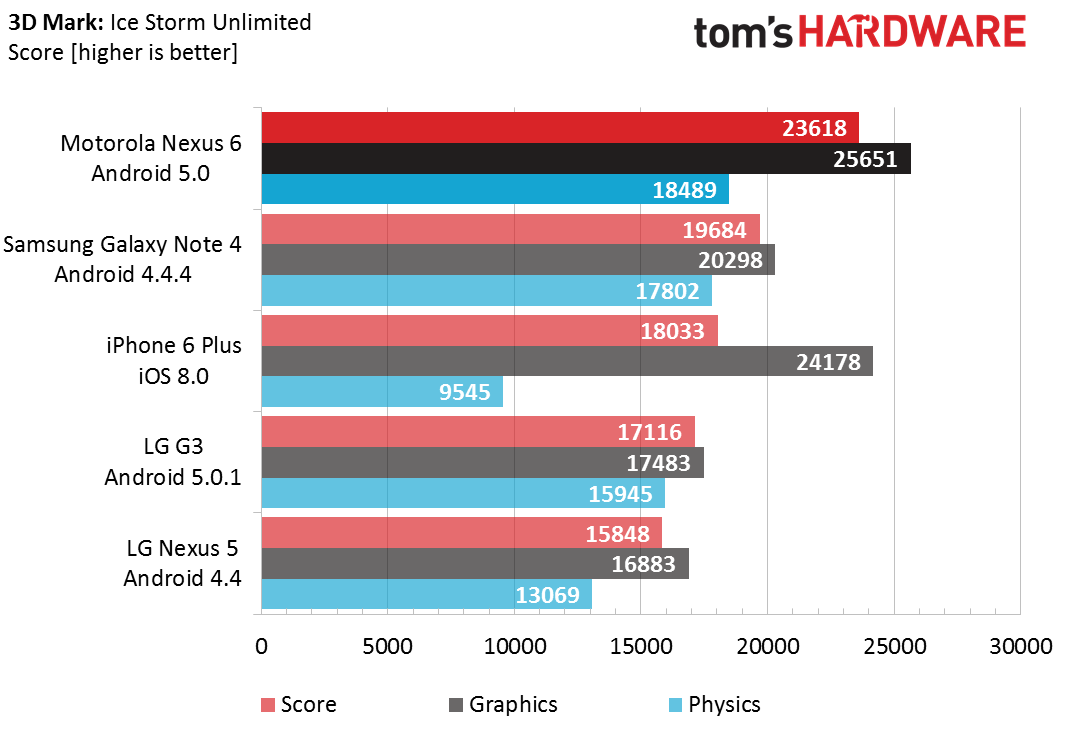Google Nexus 6 Review
Why you can trust Tom's Hardware
GPU And Gaming Performance
Mobile GPU performance is becoming increasingly important as people begin to see their phones and tablets as portable gaming machines. This section explores GPU performance with several synthetic and real-world game engine tests. To learn more about how these benchmarks work, what versions we use, or our testing methodology, please read our article about how we test mobile device GPU performance.
The Nexus 6 does well with Ice Storm Unlimited, posting both the highest Graphics (GPU) and Physics (CPU) scores. Despite using the same Adreno 420 GPU as the Note 4, the Nexus 6 easily outperforms it on the Graphics test. The reason is simple: thermal throttling. Throughout testing, the Note 4 consistently showed a tendency to overheat and throttle back the GPU pretty quickly.
Adreno 420 shows off its gaming prowess by improving upon the Nexus 5's Adreno 330 GPU score by 52%. The Physics score sees a 41% improvement over the previous generation, helped along by the Nexus 6's superior memory bandwidth.
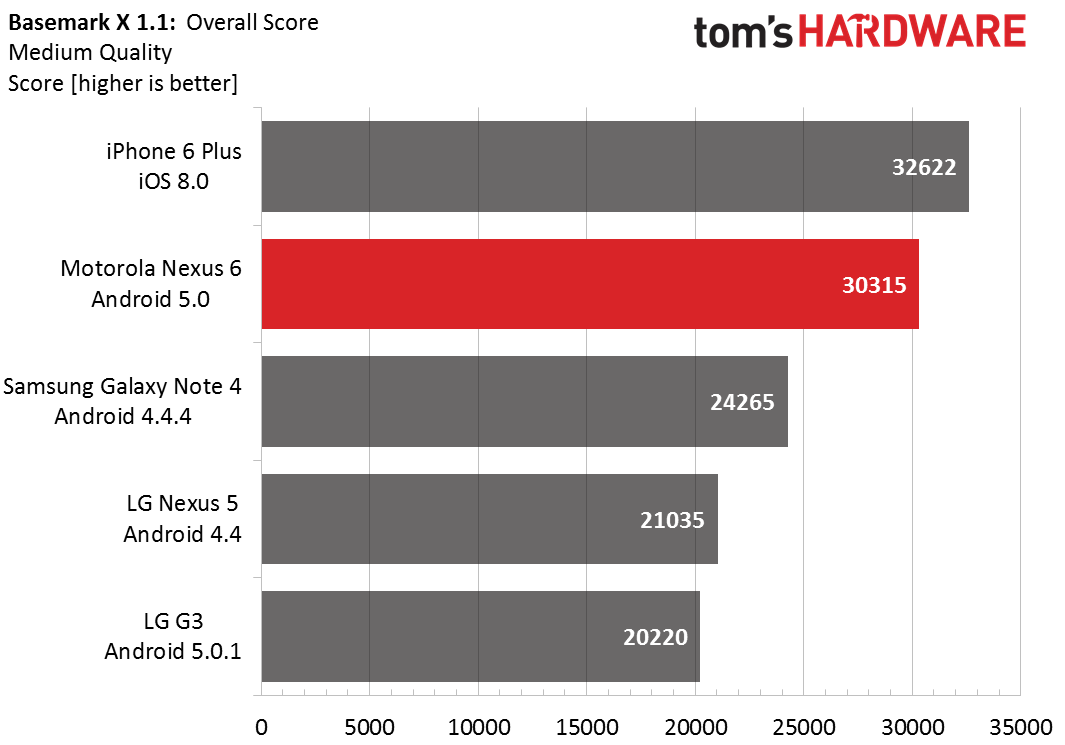
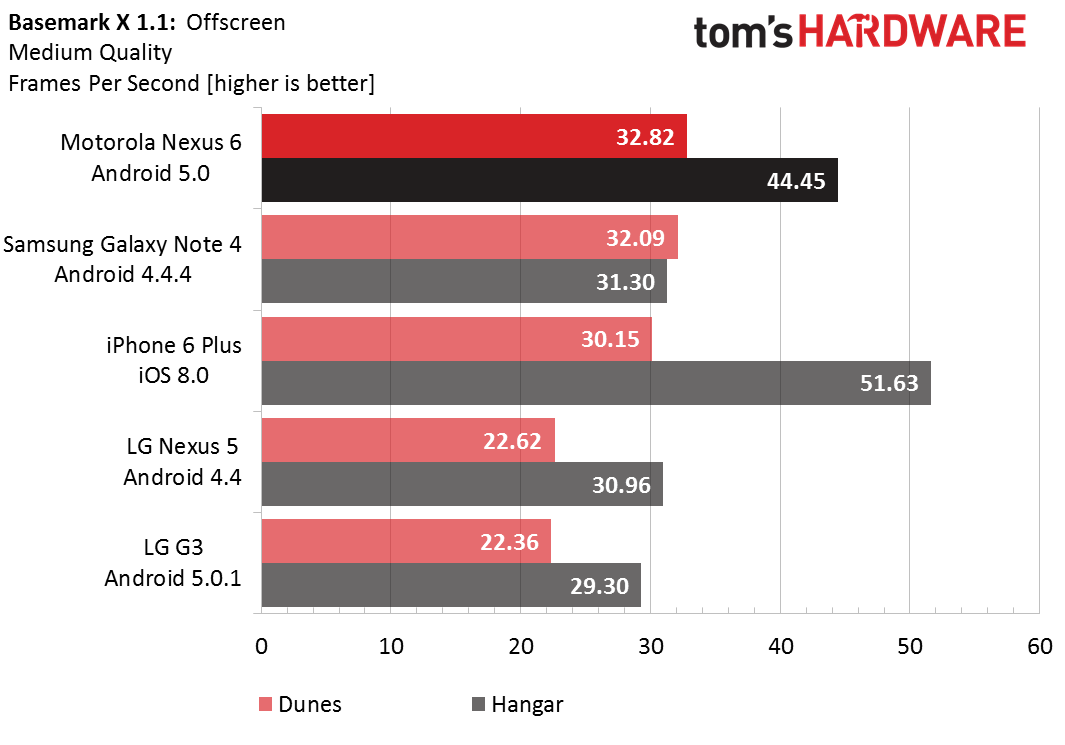

The iPhone 6 Plus remains at the top of the Basemark X Medium Quality chart based on its strong performance in the Hangar test. Likewise, the Nexus 6 outperforms the Note 4 in Hangar due to thermal throttling.
The difference between the Nexus 6 and Nexus 5 is once again close to 50% in offscreen rendering. The Nexus 6 and Note 4 both fall behind the Nexus 5 in the onscreen tests, a consequence of rendering at the higher WQHD resolution.
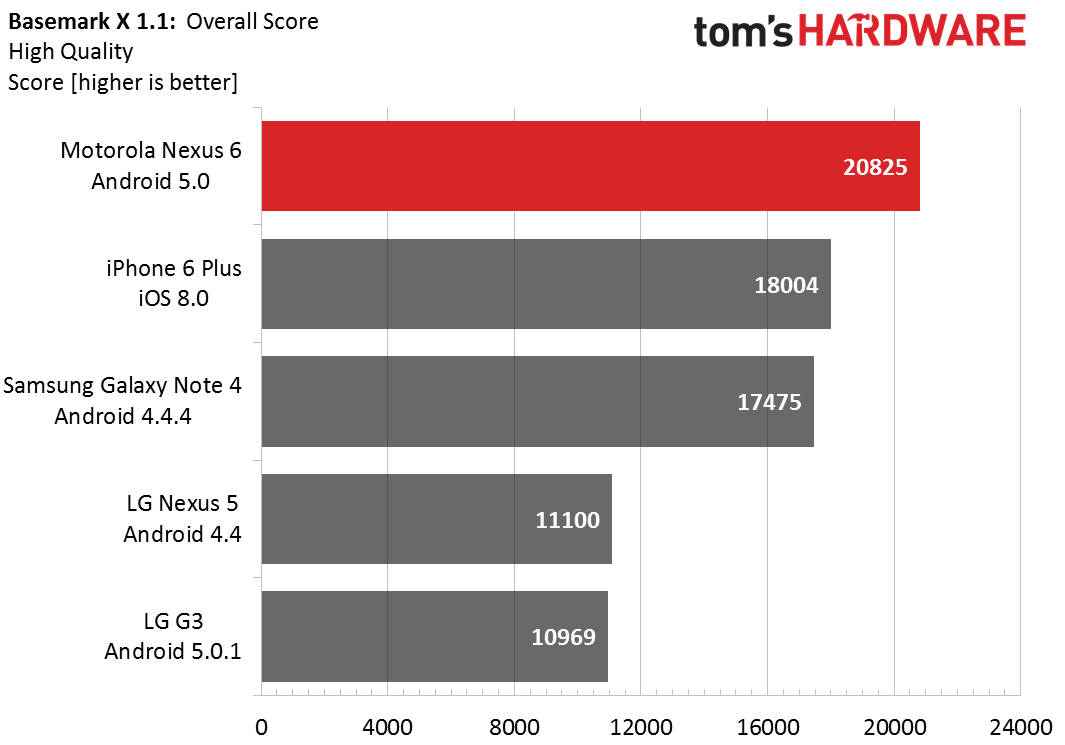
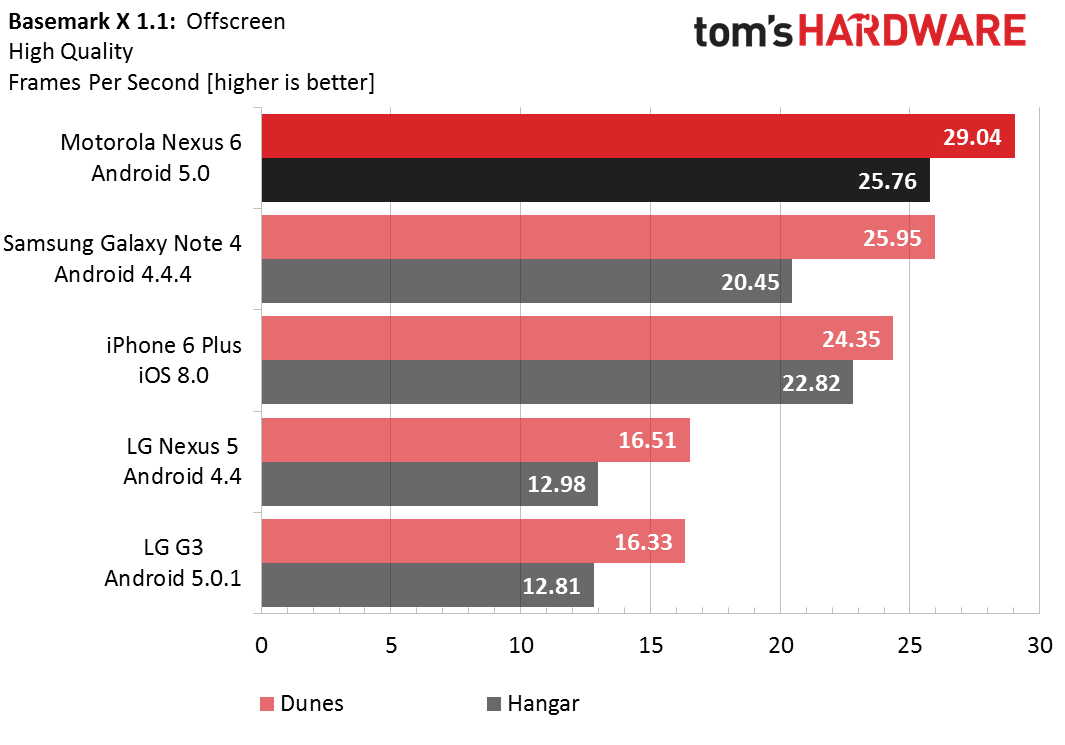
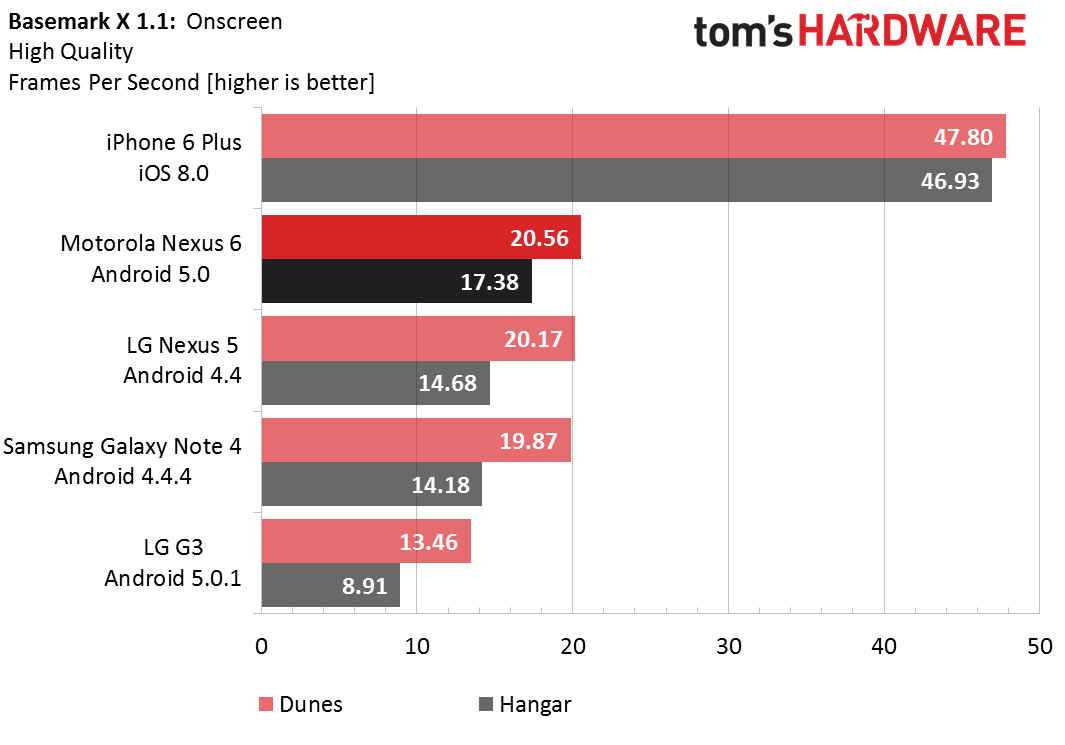
Moving to the High Quality tests, we see the higher memory bandwidth provided by the Snapdragon 805 push the Nexus 6 past the iPhone 6 Plus. It even manages to squeak past the Nexus 5 in the onscreen tests as the Adreno 330 and its lower memory bandwidth choke on the higher-resolution textures.
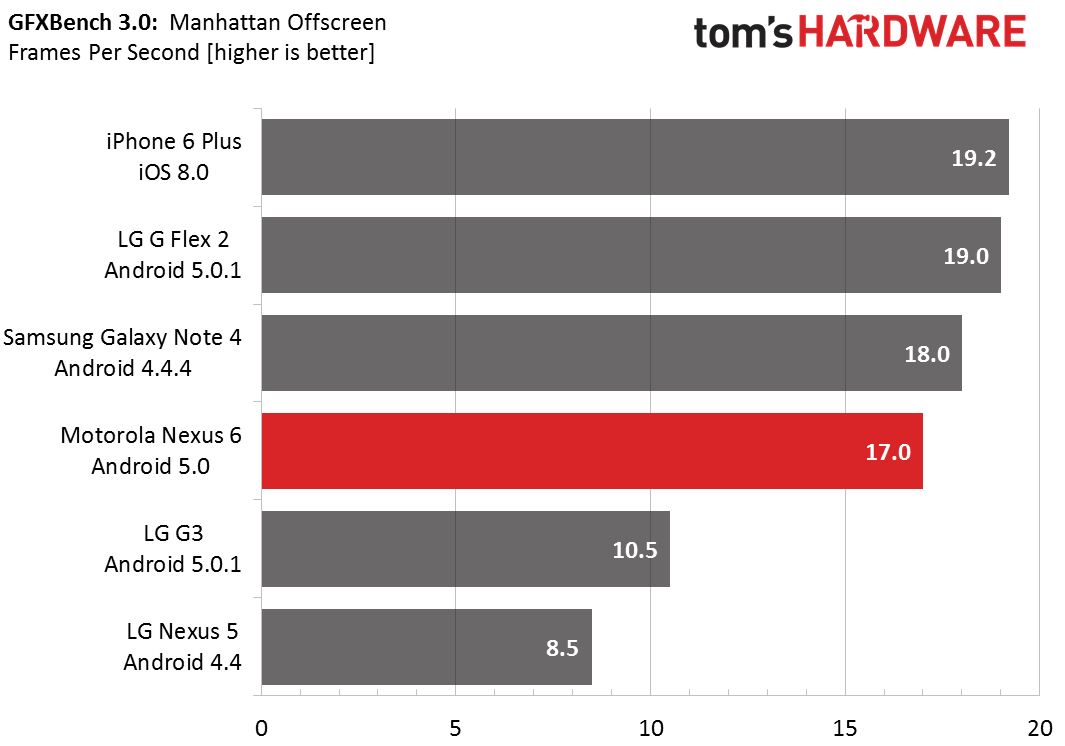
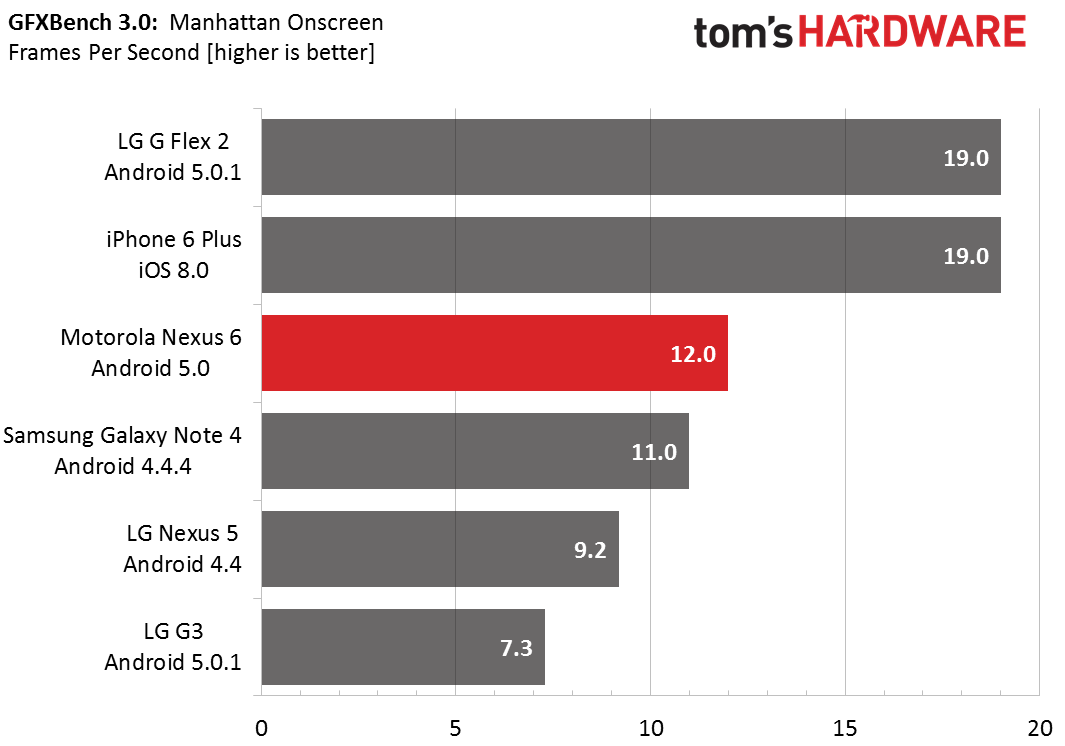
In the lighting- and shading-intensive GFXBench 3 Manhattan test, the Nexus 6 performs twice as fast as the Nexus 5. Among its many improvements, the Adreno 420 adds more texture and shading units, which are put to good use in this OpenGL ES 3.0 benchmark.
Get Tom's Hardware's best news and in-depth reviews, straight to your inbox.
Manhattan is less prone to causing thermal throttling, which allows the Note 4 to achieve its full performance. The Adreno 430 GPU in the LG G Flex 2 only scores 12% higher than the Nexus 6.
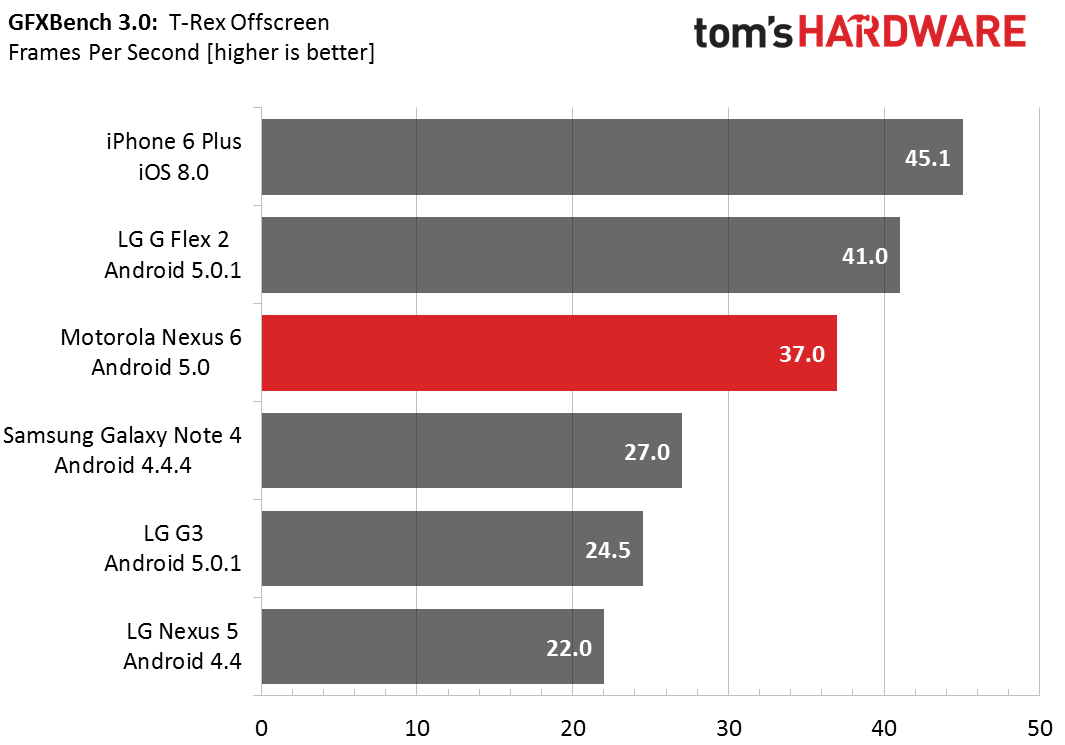
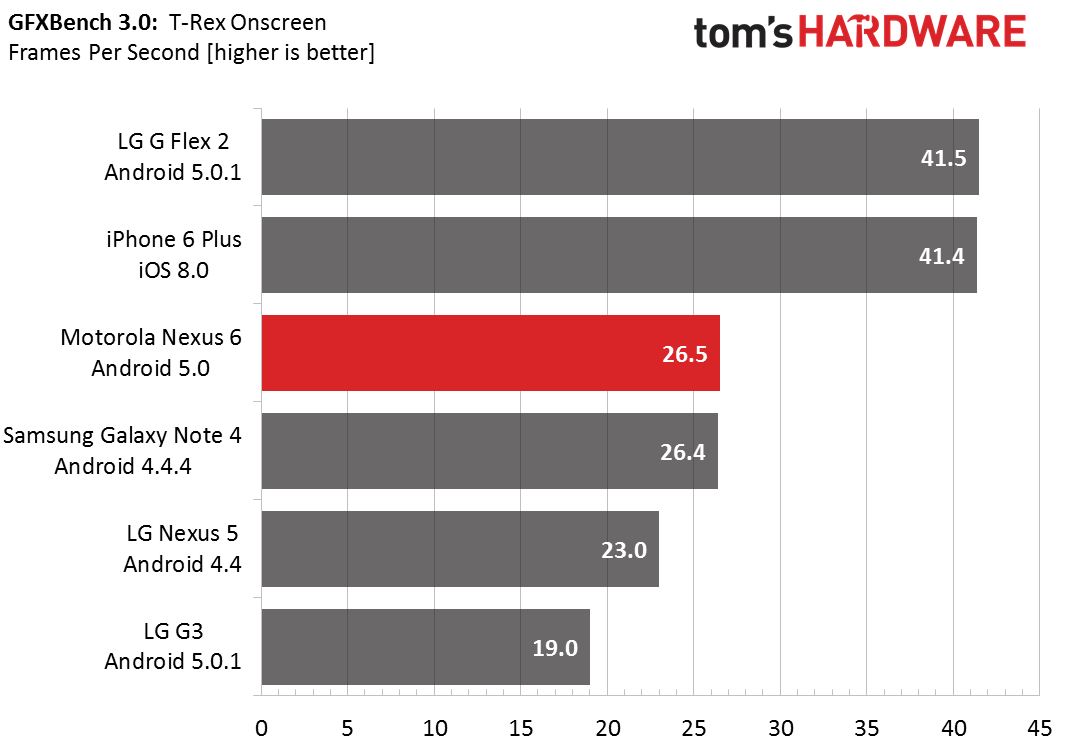
The Adreno 420 again shows impressive gains over the 330 in the Nexus 5, and the LG G Flex 2 is a mere 11% faster than the Nexus 6. T-Rex is notorious for causing throttling, and the Note 4 becomes just another of its victims.
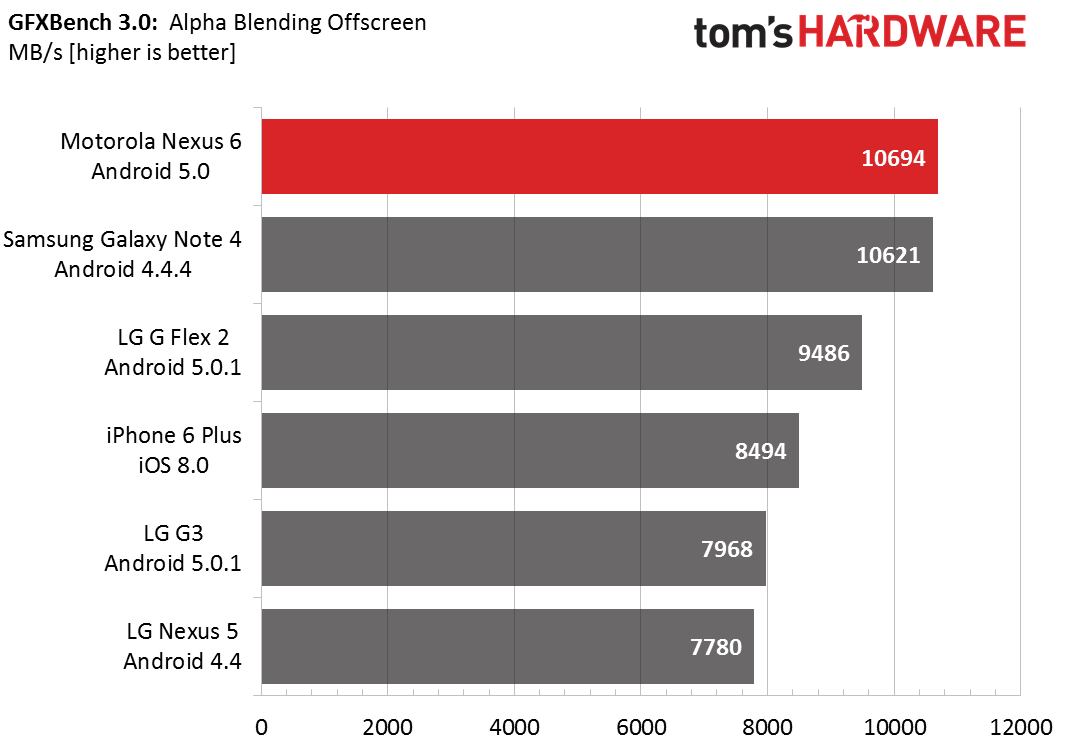
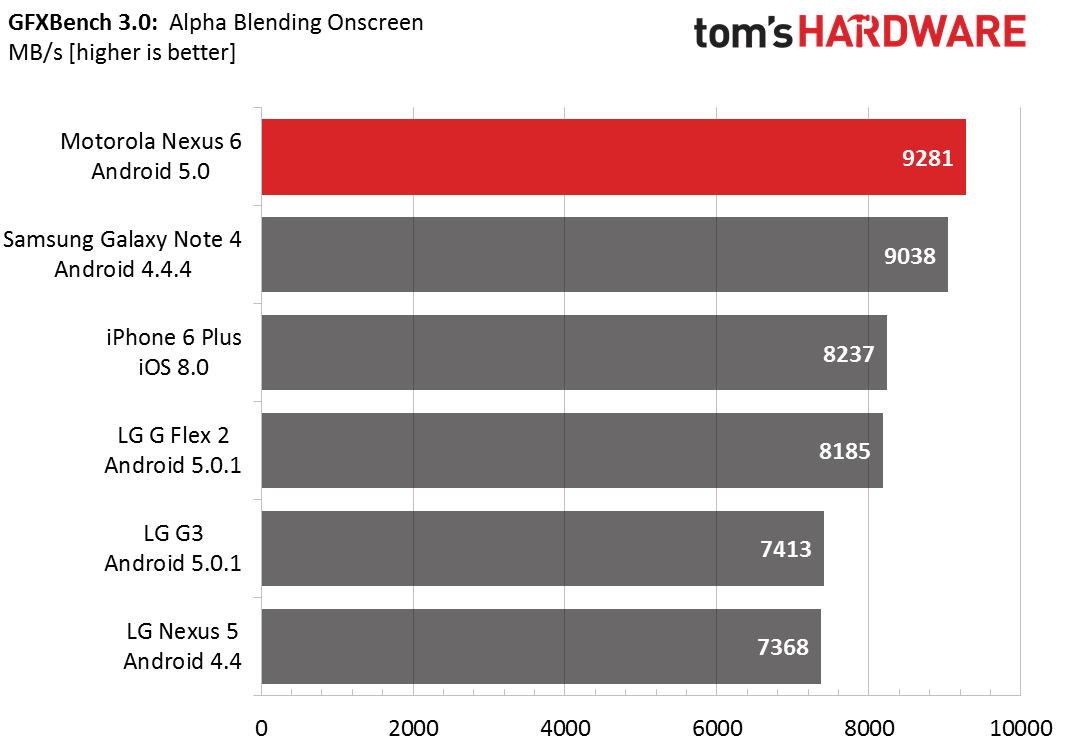
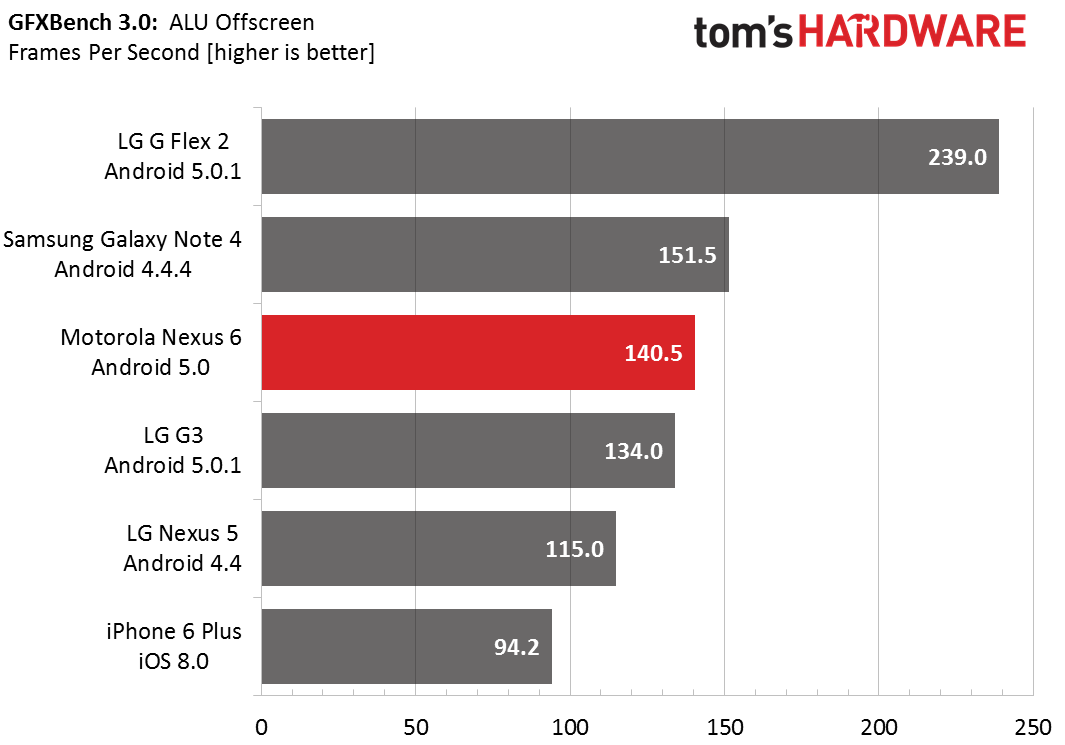
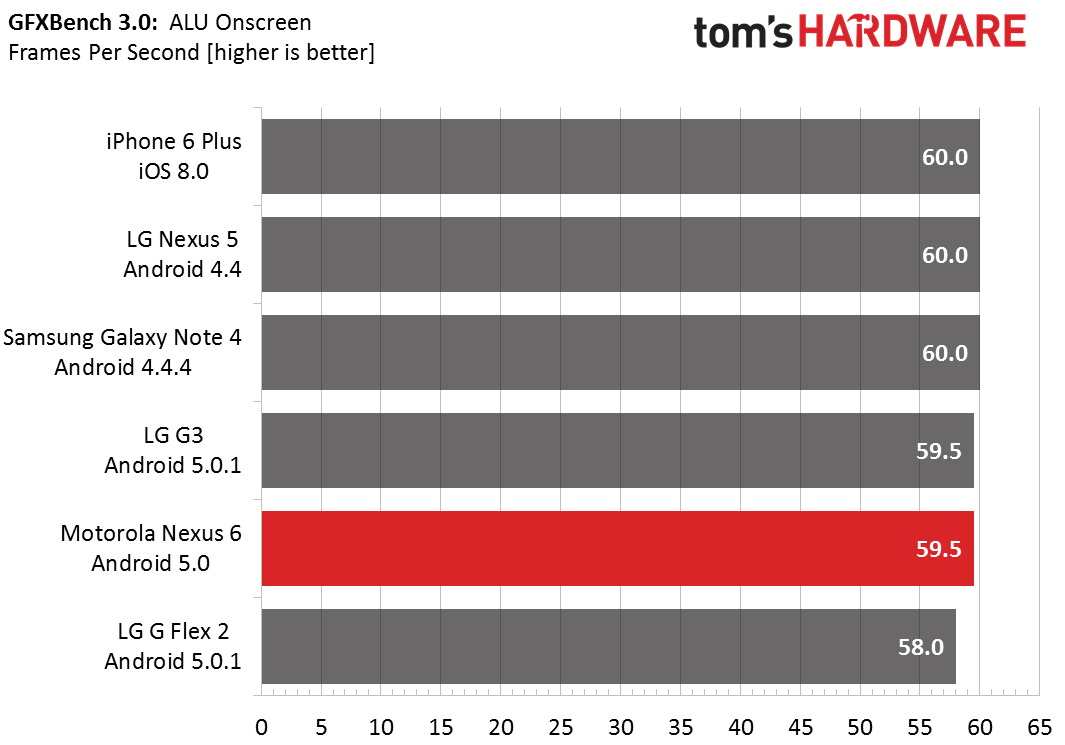
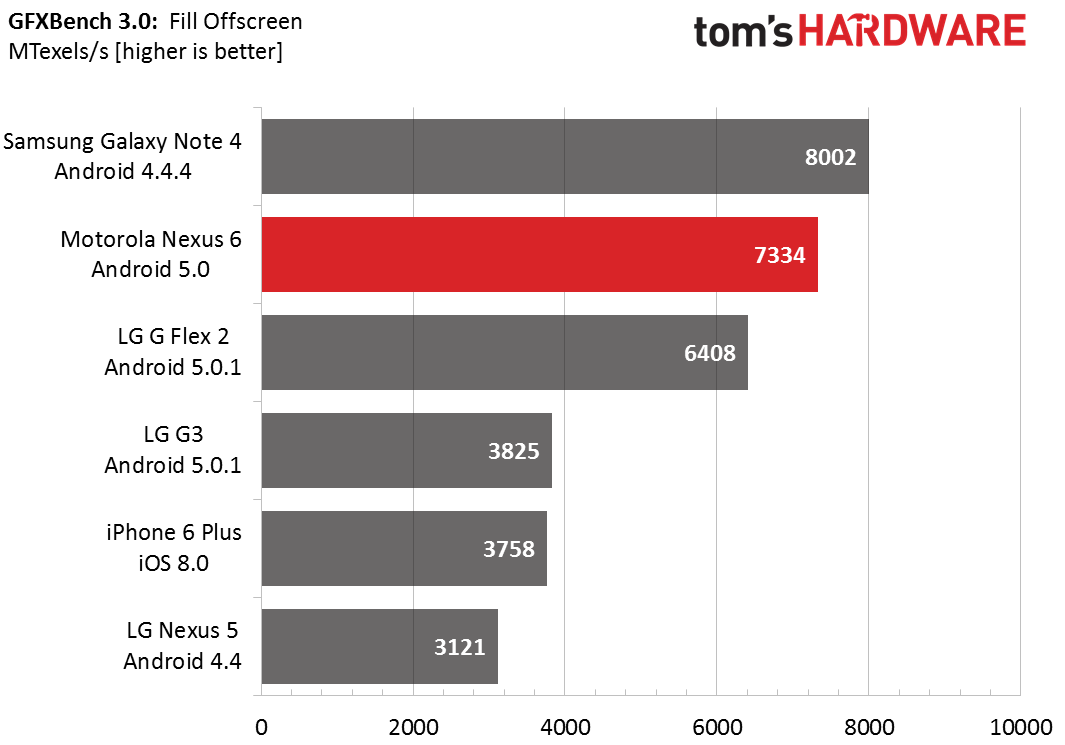
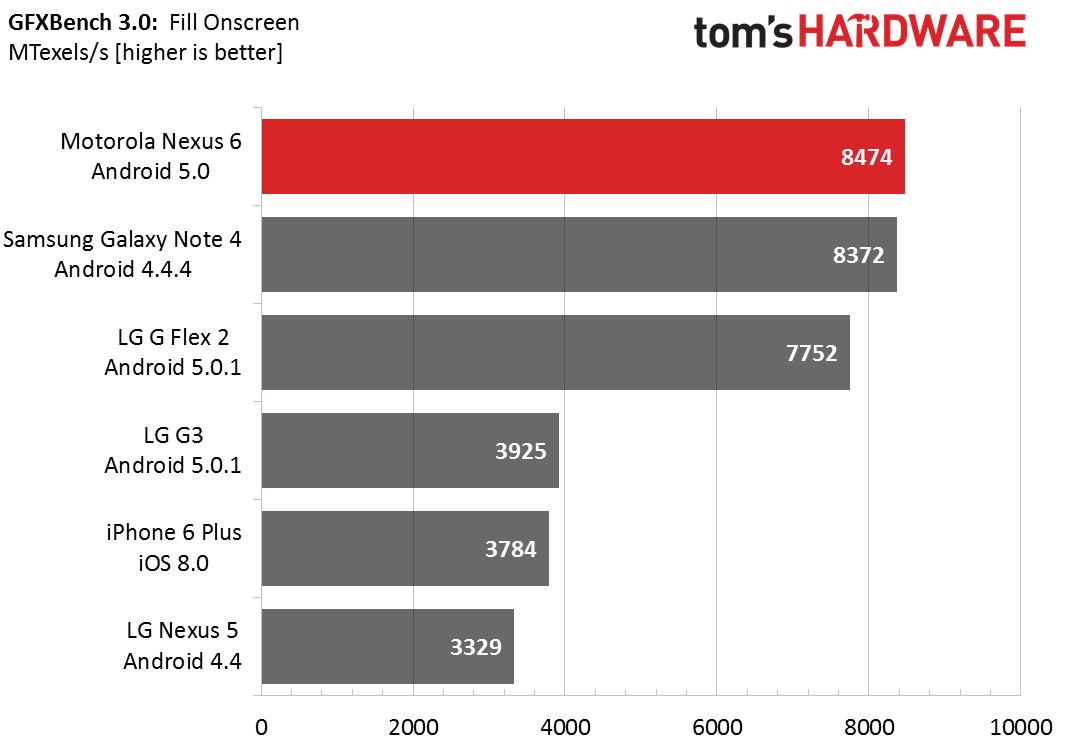
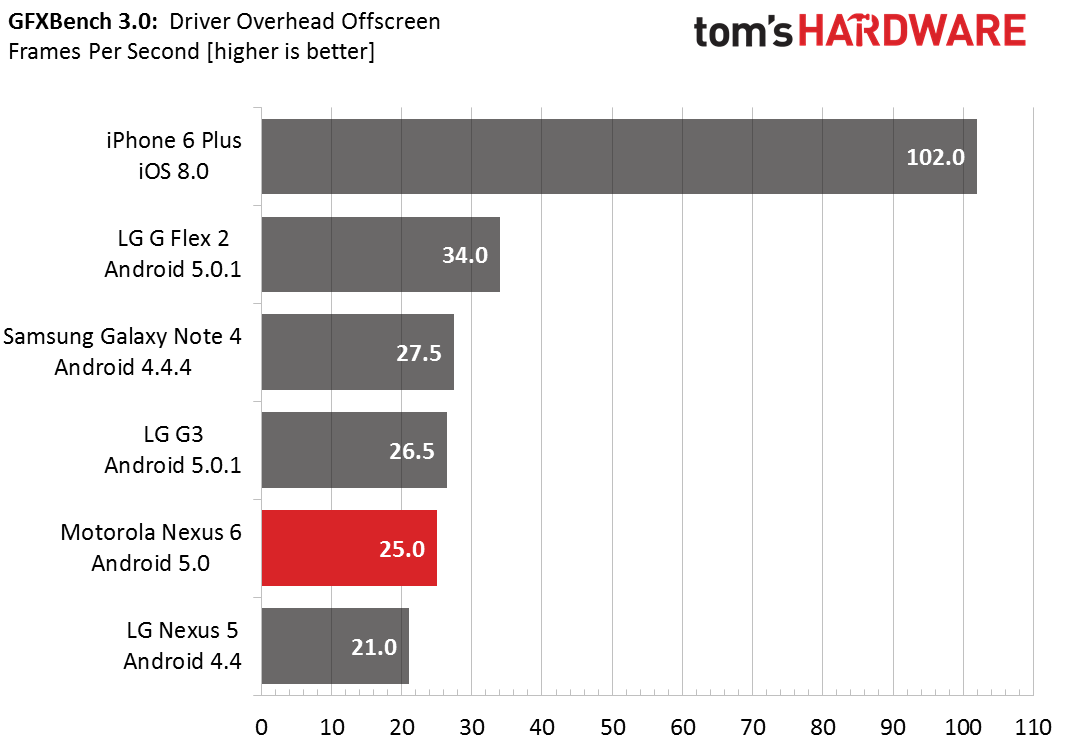
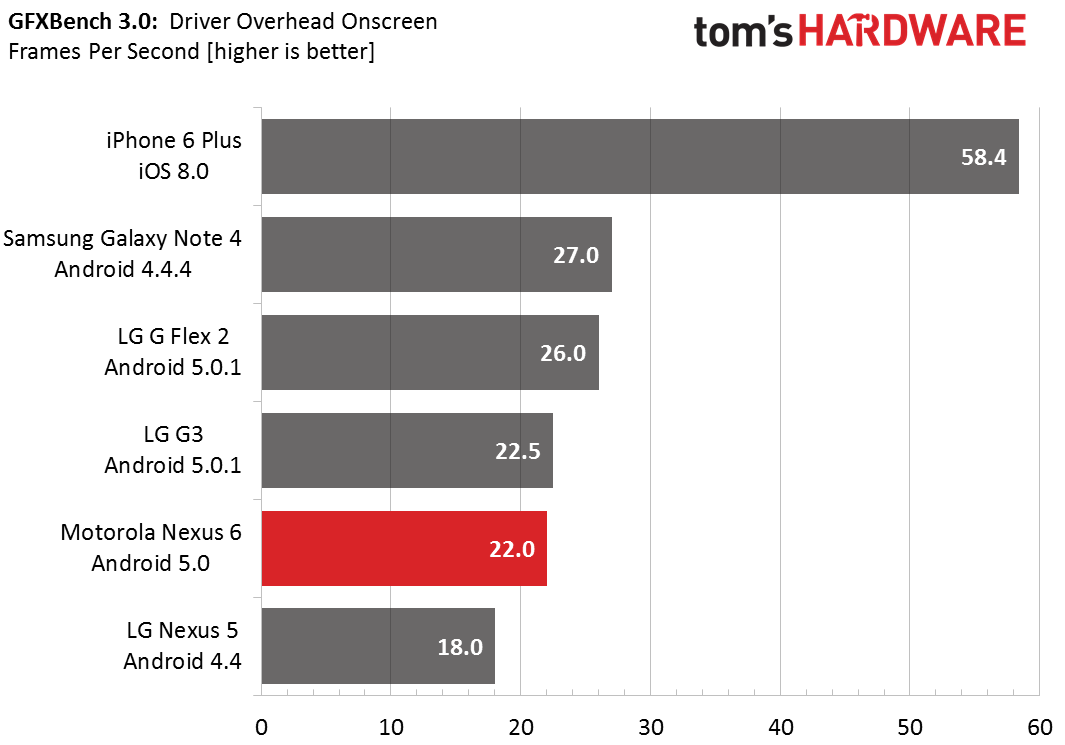
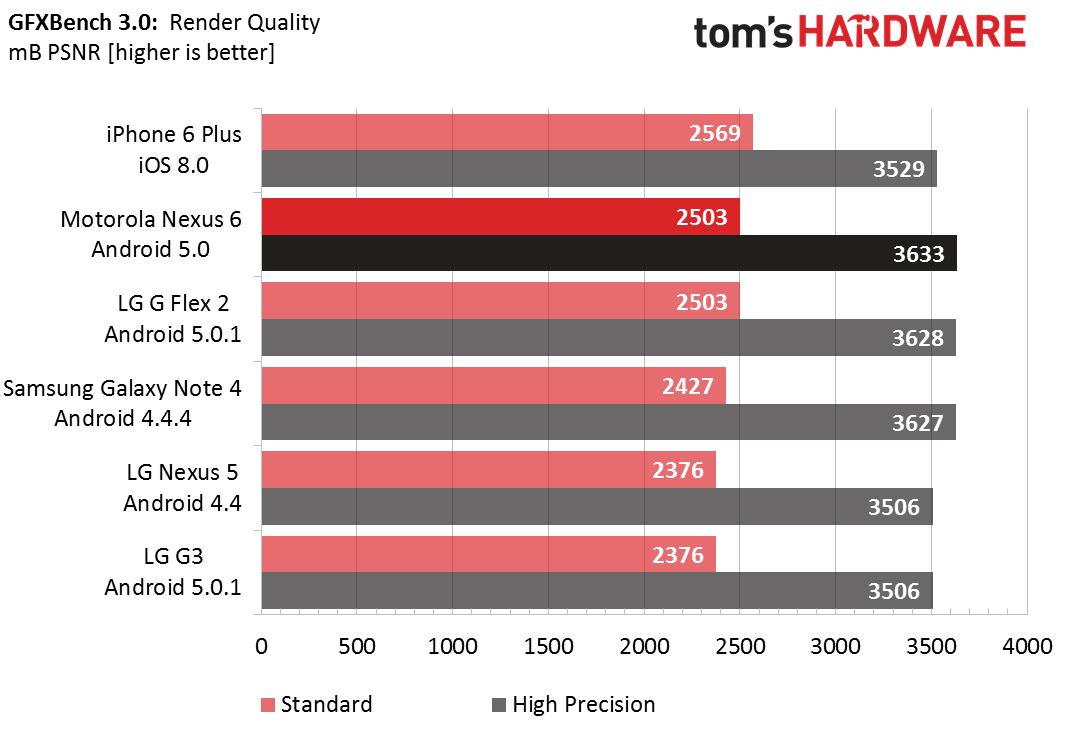
Turning to the GFXBench 3 synthetic tests, we see the Snapdragon 805-powered devices top the chart in the memory bandwidth-intensive Alpha Blending test. Curiously, they even best the G Flex 2; however, LG's latest flagship redeems itself in the ALU test. ALU performance was a point of emphasis for Adreno 430 and that shows here. The Nexus 6 performs as expected in the remaining tests.
The Nexus 6 turns out to be a solid performer in our GPU and gaming tests. It's a significant upgrade over the Nexus 5, offering improvements of 50% or more in several tests. It also proves more resistant to thermal throttling than the Note 4.
In addition to our usual benchmarks, we also tried running the recently released GFXBench 3.1 and Basemark ES 3.1, which, as their names suggest, include tests supporting the new features included in OpenGL ES 3.1. The updated graphics standard requires Android 5.0 and a qualifying GPU. Since Adreno 420 is Qualcomm's first GPU with ES 3.1 support, the Nexus 6 meets both requirements.
However, on the original Android 5.0 build both benchmarks show the Nexus 6 only supporting up to OpenGL ES 3.0 and indeed, neither would run. The Android build sheet (/system/build.prop) for the Nexus 6 also shows ES 3.0 support. After updating our Note 4 to Lollipop, it ran GFXBench 3.1 just fine (although it consistently crashed near the end of Basemark ES 3.1), so we know the Adreno 420 is capable. It appears that the Nexus 6 shipped with an out-of-date graphics driver.
The good news is that the Android 5.1 update includes an updated graphics driver, finally bringing OpenGL ES 3.1 support to the Nexus 6. In the new GFXBench Manhattan ES 3.1 test, the Nexus 6 and Note 4 are dead even. Like the Note 4, the Nexus 6 has trouble running Basemark ES 3.1, crashing to the home screen at the beginning of the first test.
Current page: GPU And Gaming Performance
Prev Page CPU And System Performance Next Page Battery Life And Thermal Throttling-
MobileEditor ReplyWhy wasn't the S6 used in this comparison?
Primarily because of the difference in screen size. If someone is considering a 6-inch phone, they probably are not interested in 5-inch phones. Thus, we compared it to other devices with a 5.5-inch or larger screen (and the Nexus 5 just because it was the previous generation).
- Matt H. -
Desertlax I think there is a typo about price, the nexus 6 is listed as 649 and 699 on the play store, not "starting at $750".Reply -
Tanquen I don’t know if Google lowered the price or when but it’s been $649 for the last week or so that I’ve been thinking of buying it. So I don’t get the repeated complaint that the price is $750 and too high. ???Reply -
MobileEditor ReplyI think there is a typo about price, the nexus 6 is listed as 649 and 699 on the play store, not "starting at $750".
Thanks for pointing this out. The article has been updated to reflect the current pricing.
- Matt H. -
Stryfex Did I hit my head and go back in time by like 6 months? Why is toms hardware posting reviews of the Nexus 6?Reply -
rtfizzel The Nexus 6 camera does have OIS. At least it is listed as a feature by Google and many other reviews.Reply
https://www.google.com/nexus/6/ -
rtfizzel My bad, misread. Apologies.ReplyThe Nexus 6 camera does have OIS. At least it is listed as a feature by Google and many other reviews.
https://www.google.com/nexus/6/ -
Chillyblue I have owned my N6 since it came out. Unlike others, I ordered it on release date, and got it five days later.Reply
By now long discussions about his big it is are redundant and moot. Those who purchase the phone known that, and like the screen real estate. Size is a preference they choose. If someone wants a smaller screen, they have unlimited options. To be honest, one become quite accustomed to the size rather quickly.Enough about size. Oh, it fits perfectly into my Levi Strauss jeans back pocket.
This phone since upgrading to 5.1 is a lightening fast. I run stock rooted with Franco Kernel. Antutu benchmark is 55,000 and Gerebench is 1200 single core, and 3600 multiple. I've run both encrypted and unencrypted... and frankly I csntvdetect any difference other than a faster boot time.
The build quality is excellent, the screen accurate and detailed, the camera gets the job donecwith clarity and definition....if you use a different third party camera app the results get better.
I've owned a HTC M8, and a Samsung note 3. Touch Wiz sucks, and bulild quality was toy like. HTC M8 offered excellent build quality and sense is far less intrusive then touch wiz.
Personally, pure Android, a bigger screen, faster updates, excellent build quality all make this phone a winner.
